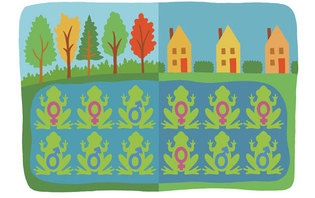 loading
loading
FindingsA problem with lawns?In the suburbs, frogs are becoming female.  Gregory NemecView full imageThere’s something eerily wrong in the south-central Connecticut suburbs. The ratio of males to females is skewed—at least among green frogs in suburban backyard ponds. One possible cause: your lawn. “Every frog has genes that determine sex, but we’ve known from laboratory studies that these can be overridden by environmental influences,” says Max Lambert, a doctoral student at Yale’s environment school. Earlier research had suggested that suburbanization—and contaminants such as pharmaceuticals flowing from sewers and septic systems—might be to blame. Lambert’s new study of green frogs (published in September in PNAS) is the first to show the influence of phytoestrogens, hormone disruptors that can leach from common plants such as clover. Lambert studied sex ratios in 6 forest ponds and 14 suburban ponds. Frog populations in the forest were about 70 percent male, which was puzzling in itself. But the ratio “completely flipped” in the suburbs. The ponds were dominated by females, reaching 60 percent female at the extreme. Only the suburban water samples contained plant-derived estrogens—suggesting that phytoestrogens are likely factors. Lambert emphasizes that more than one factor is at play. But, he adds, endocrine-disrupting chemicals also affect humans. “This may not just be a frog story.”
The comment period has expired.
|
|